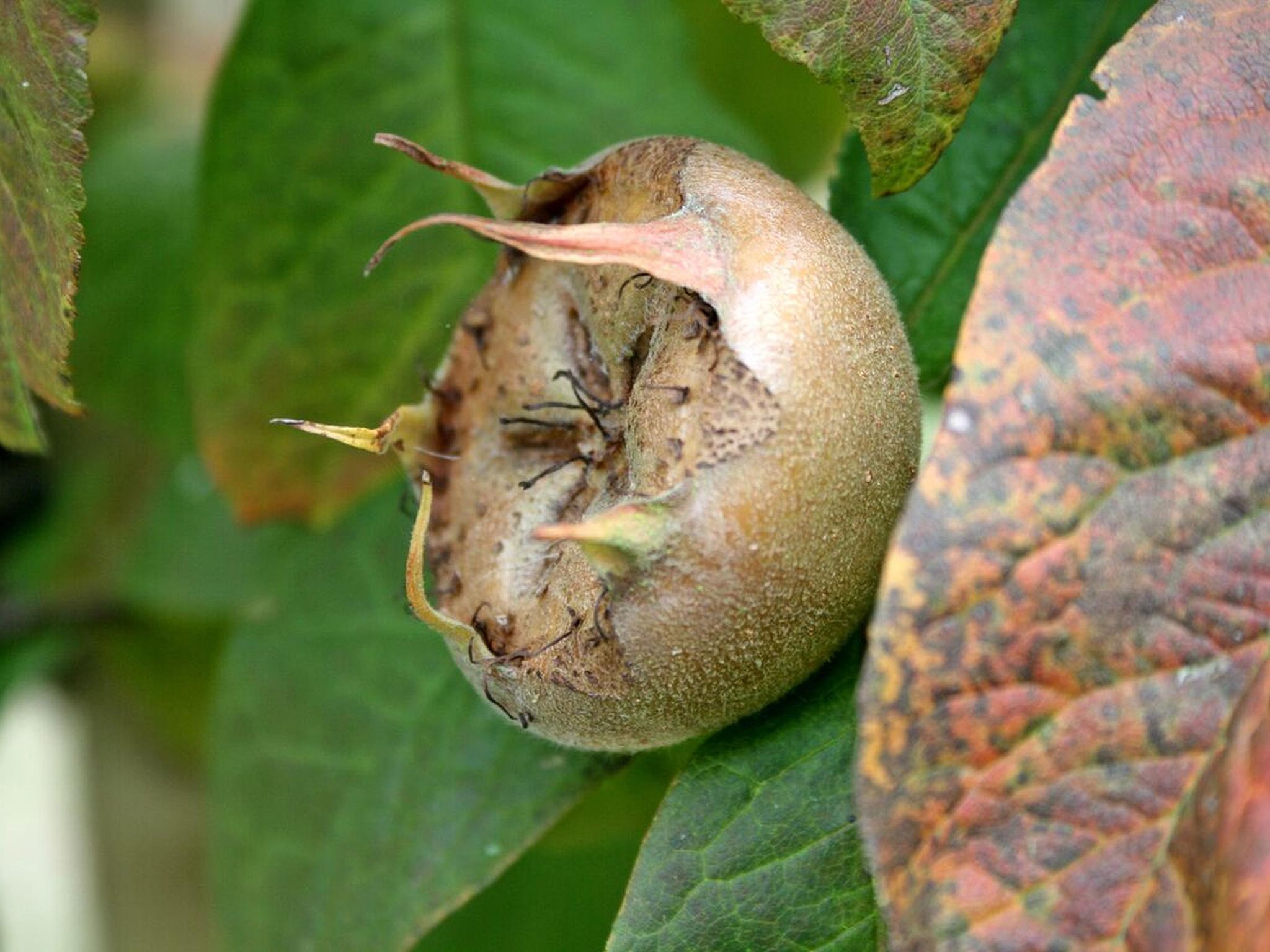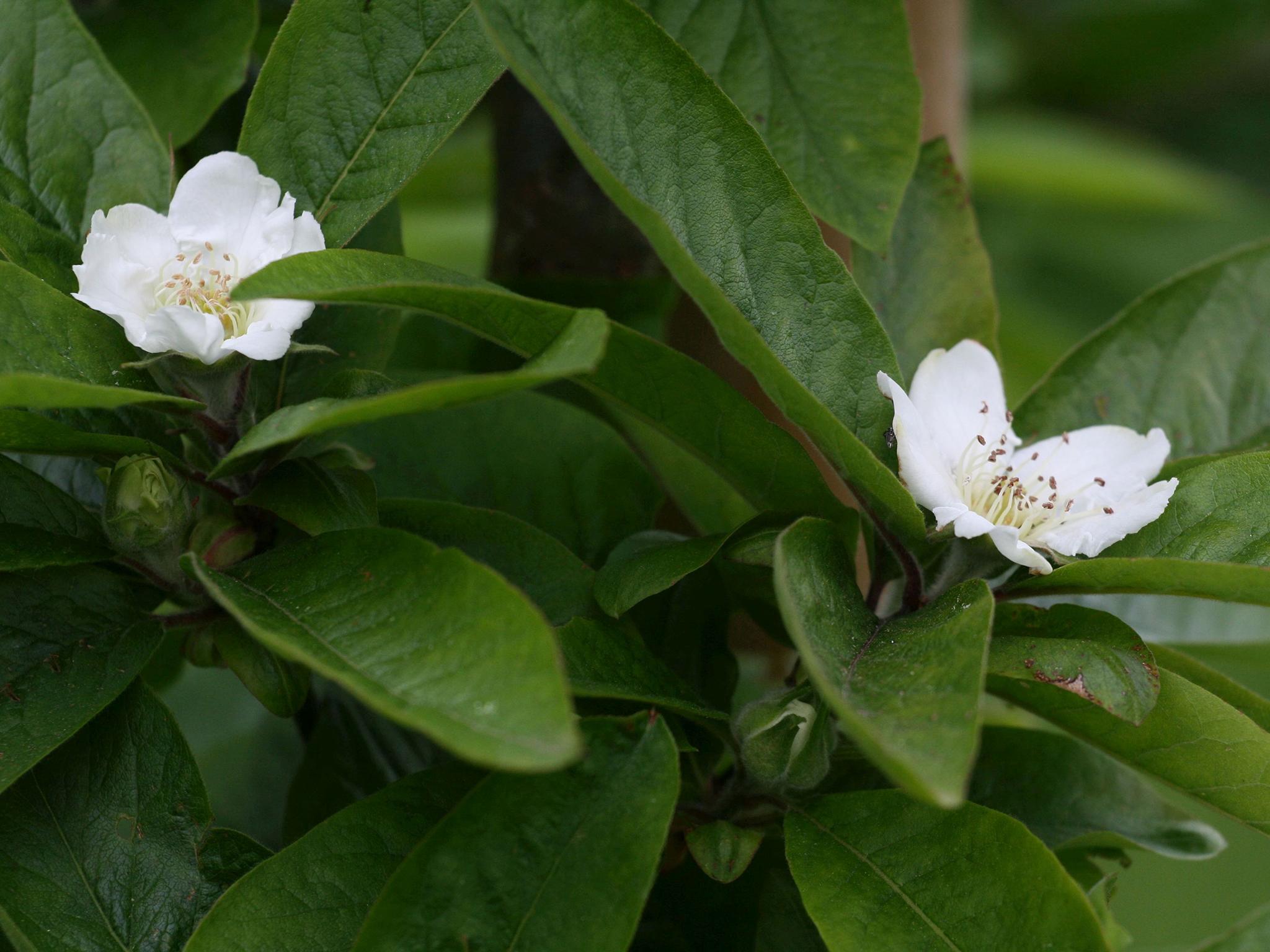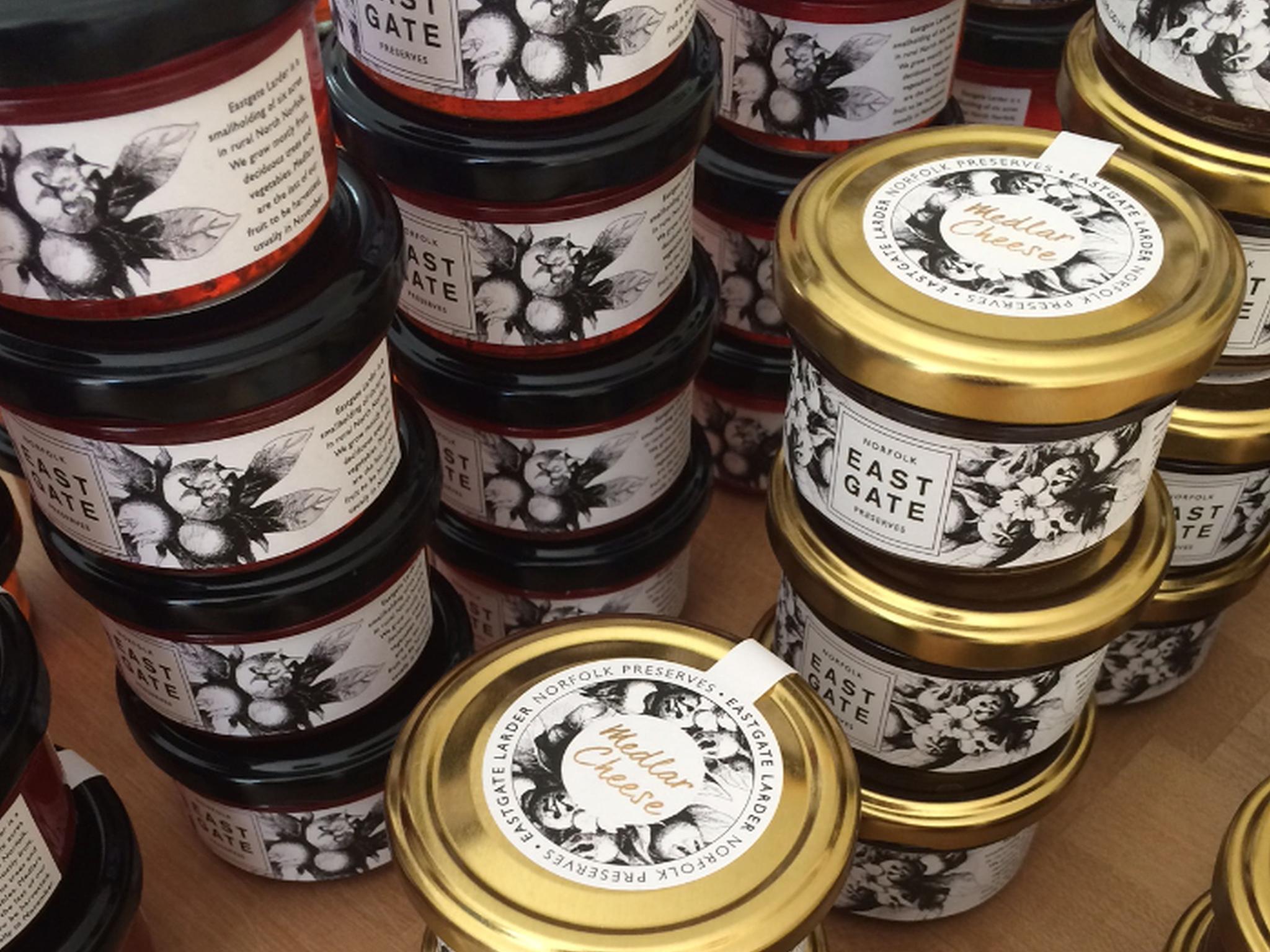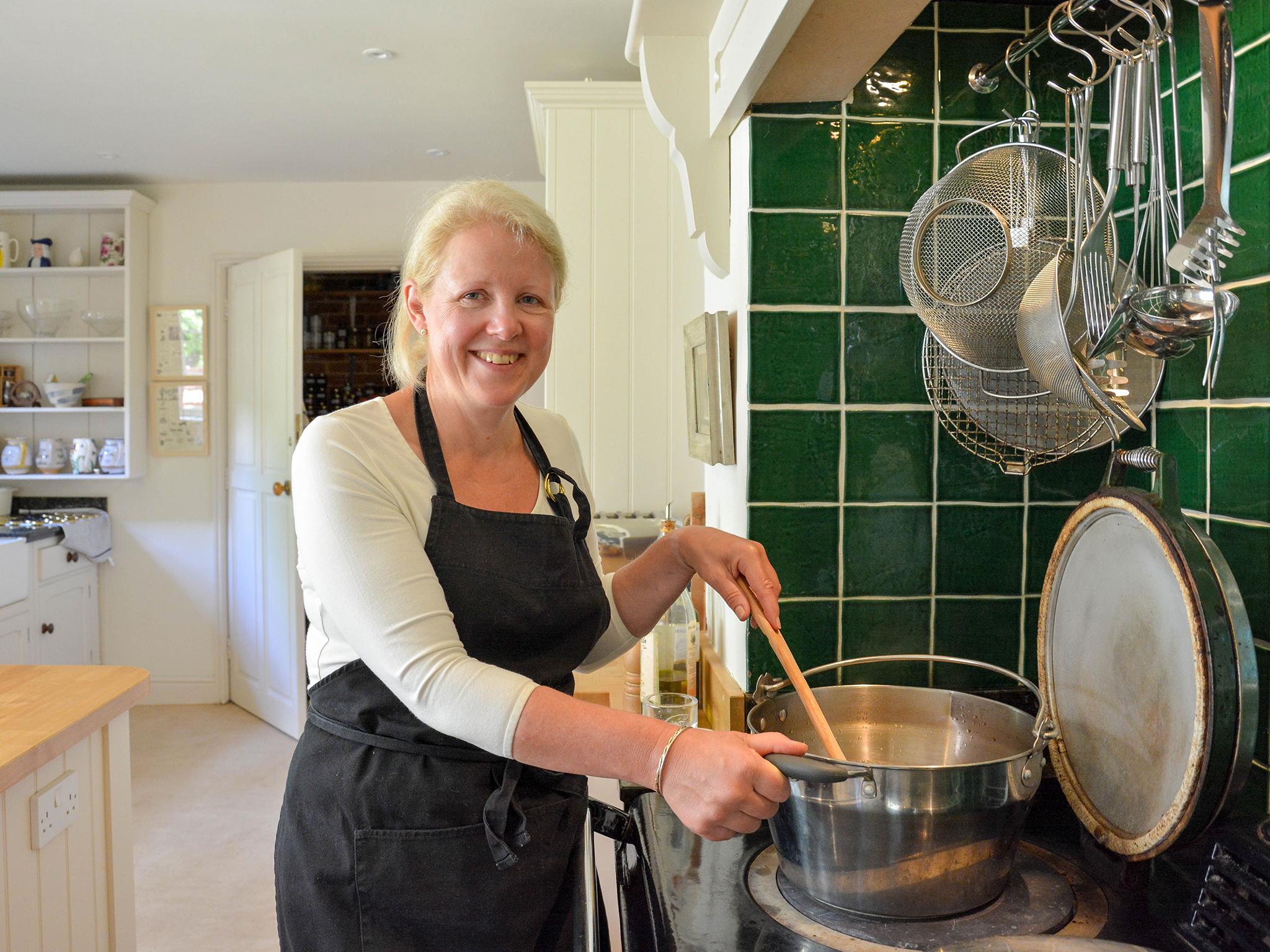Medlars: The 'open-arse' fruit that could be making a comeback
This rather unattractive – and unfortunately nicknamed – fruit is hard to eat. But Julia Platt Leonard has found a woman determined to bring this beast back to the table

The French call the medlar tree, cul de chien (translation: dog’s arse). Shakespeare called their fruits “open-arse”. And in a poem, DH Lawrence called medlars "autumnal excrementa". If you’re getting the distinct impression that the much maligned medlar isn’t going to win any beauty contests, then you’re right.
Add to this the fact that you can’t pick a medlar and eat it ripe from the tree, as you would an apple. It’s inedible unless bletted – a process of letting it ripen in a cool place until it’s squishy, soft and brown. Hardly winning you over, is it?
So why is Jane Steward of Eastgate Larder, determined to bring the medlar back to our table? The fact is that we did eat medlars in Britain hundreds of years ago and it was a beloved wintertime sweet treat before the arrival of sugar. The medlar tree comes from Persia and the Greeks and Romans grew them as well. But the medlar fell out of favour in England. Now Jane is hoping to revive their fortunes with her medlar jelly and cheese that she makes from her own fruit she grows at Eastgate in Norfolk.

Her mission started five years ago when she moved to the six-acre small holding with her husband David. There she found an existing mixed orchard, including 10 medlar trees. In the early days, her harvest was “measurable in baskets,” she says. She decided to turn the fruit into medlar cheese and jelly without using any jam sugar or liquid pectin. “And I found out I could do it,” she says. Curious and sometimes cautious friends and family tried her creation, loved it and encouraged her to sell it commercially.

Steward acknowledges that medlars aren’t to everyone’s liking. “A very ripe medlar that has been beautifully bletted and is squishy to the point that when you pick it up, you might think there is a danger that it’s going to collapse in your hand – at that point it is very moist, very brown and it’s very sweet. And that, literally, isn’t to everyone’s taste.” Steward likens the flavour to “a super over ripe date.”
She harvests the fruit when they’re rock hard – usually in mid-November, then places them in a single layer in mushroom boxes as they’re both well ventilated and can be stacked. The medlars are stored somewhere cool and dark and then she waits, and waits. “The bletting process is gradual. It doesn’t happen overnight or even in the course of a morning.” She can usually tell they’re getting close when she’s greeted with the very strong aroma of ripe apples as she opens the storeroom door. Then she must check each one individually to see if it’s ready.
“Typically, I will go through each tray and you can tell by colour. They become darker and they start to wrinkle as they’re ripening. And inevitably your fingers come into play. So there’s a lot of touching and squeezing that goes on. It’s quite a task.” David helps with the bletting checks while her daughter, who is a designer, created the branding for Eastgate Larder.
A friend helped out too by introducing Steward to Matt Kelly and Steve Cooper, owners of Pistachio & Pickle Dairy in London’s Camden Passage. They admit they’d never tried medlars before but are always on the look out for new, artisan products, prepared with care. “The fact that Jane grows, makes and pots up these little gems herself is amazing,” they say. They suggest pairing the medlar cheese with a hunk of blue cheese and Jane says it’s great straight on toast as well, with a slice of cold gammon or as a stuffing for baked apples. The jelly marries nicely with game, roast meats, pates and terrines as well as soft cheeses.

Pistachio & Pickle placed an initial order for eight jars. Today, Steward’s business has grown and Steward has planted more medlar trees. Like many small food producers she’s obsessive about the quality of what she produces, ensuring each batch is as good as the last. “Every time I think, cranky, can I made it work again?” she says. Each batch starts with two kilos of fruit (she freezes much of the harvest so she can produce all year round) and starts out a pale straw colour. She keeps a bag of batch sample jars to ensure that each one transforms into a gorgeous reddy-pink colour. “I’m slightly obsessed that the colour match is as good as I can make it. I ought to get a Pantone colour – medlar jelly,” she jokes.
It’s a long way from the highly successful leadership coaching business she started and built up before leaving it to create Eastgate Larder. She acknowledges that it was difficult to leave her old career for a new one but is glad she did. “Everything about the medlar is slower, you have to be patient. You have to take care of it once it comes off the tree. It isn’t like pulling an apple and just munching into it. You have to do a bit of work with it and keep it in the right conditions before it can fulfil its true potential for you.”
It seems the right calling for a woman with the surname Steward, because she’s become a steward for her trees and a largely forgotten fruit. Taste her medlar jelly with a bit of Norfolk cheese and you’re reassured that the medlar tree couldn’t be in better hands.
Join our commenting forum
Join thought-provoking conversations, follow other Independent readers and see their replies
Comments
Bookmark popover
Removed from bookmarks